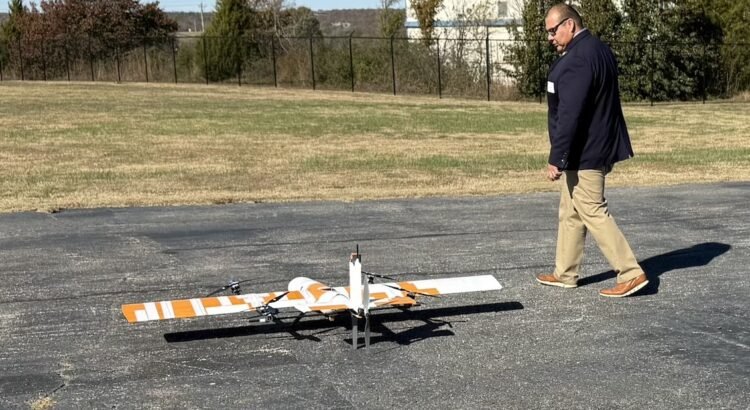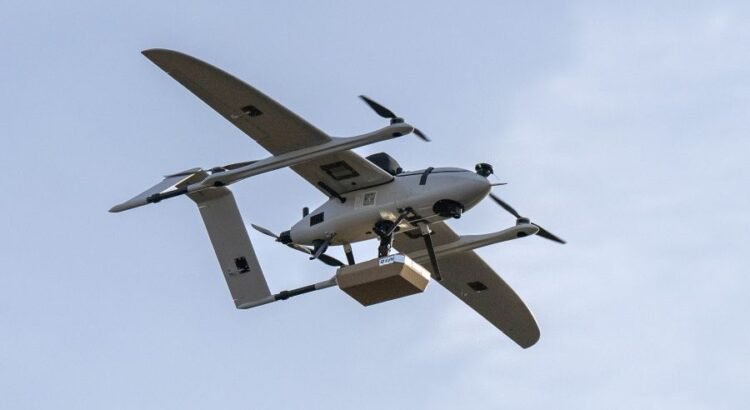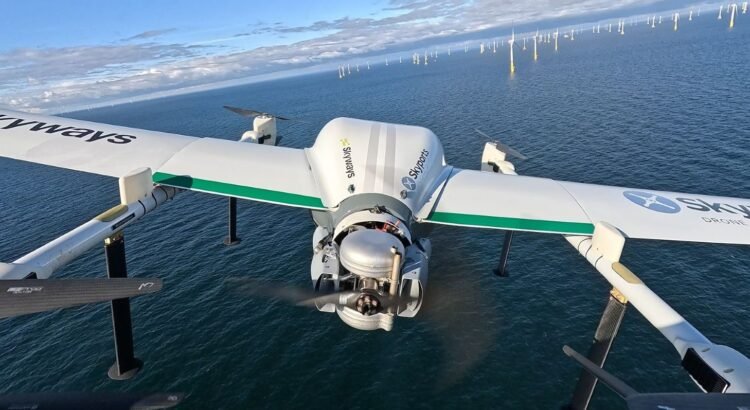Osage LLC welcomed members of the Osage Nation Congress for an in-depth tour and lunch briefing at Skyway Range, offering a first look at an ambitious vision to transform the area into a leading center for uncrewed aerial systems (UAS) innovation, testing, and economic growth. The visit provided Osage leaders with a comprehensive overview of […]
Unmanned Systems
Unmanned Systems
Virginia Launches Advanced Air Mobility and Unmanned Systems Test Site Program
The Virginia Innovation Partnership Corporation (VIPC) and the Virginia Department of Aviation (DOAV) have announced the launch of the Commonwealth of Virginia’s Advanced Air Mobility Test Site Program, a new pilot initiative to evaluate and integrate next-generation aviation technologies across Virginia’s transportation and innovation ecosystem. Developed to support the deployment of unmanned aircraft systems (UAS), […]
Drones Transport Medical Supplies to Healthcare Station in Helsinki
Helsinki is currently exploring how drones could assist with transport during exceptional circumstances. The flights in November will cover a distance of around seven kilometers and will be flown several times per weekday. In early November, the City of Helsinki is piloting drone transports for healthcare supplies on an approximately seven-kilometer route from Kyläsaari to […]
Oklahoma High Schoolers Compete in First Annual Drone Search and Rescue Championship
Thirty Oklahoma high school teams showcased their drone-powered search and rescue skills at the inaugural “Fly Forward: Search and Rescue State Championship” on Tuesday, Oct. 21 at Lake Carl Blackwell in Stillwater. The day-long event was hosted by the Oklahoma Department of Aerospace and Aeronautics (ODAA) and the Oklahoma Aerospace Institute for Research and Education […]
ZenaTech Selects Baton Rouge as Base for Advanced AI-Driven Drone Solutions for US Defense and Homeland Security
ZenaTech, Inc. has announced that it has selected Baton Rouge, Louisiana as the base for Zena AI, Inc., the company’s specialized AI division that will develop next-generation drone technologies for US defense and homeland security applications. The company has signed a lease for a secure office space in the Downtown Baton Rouge area and will […]
EagleNXT Debuts MicaSense RedEdge-P Triple: A Game-Changer for Precision Drone Imaging
AgEagle Aerial Systems Inc. has announced the launch of the company’s MicaSense™ RedEdge-P™ Triple sensor package. This groundbreaking system, featuring each of the company’s three RedEdge-P camera models mounted simultaneously on a single drone, establishes a new standard for capability in precision agriculture, environmental monitoring, and geospatial mapping. The RedEdge-P Triple captures 15 spectral bands […]
Skyways Powers Historic Cargo Deliveries to Offshore Windfarm
Skyways has demonstrated the unmatched ability of its technology to deliver time-critical supplies in one of the world’s toughest operating environments. In partnership with RWE and Skyports Drone Services, Skyways successfully completed historic beyond the visual line of sight (BVLOS) drone deliveries to Arkona Offshore Windfarm, operated by RWE and located off the coast of […]
ZenaTech Announces the Acquisition of Tucson-based Putt Land Surveying Inc., and Acceleration of Drone as a Service (DaaS) Growth Across Arizona
ZenaTech, Inc. has announced the closing of its acquisition of Putt Land Surveying, Inc., a Tucson, Arizona-based land survey firm founded more than 40 years ago, with established clients including the City of Tucson, school districts, and a range of public and private sector clients. This transaction marks the eleventh acquisition for ZenaTech’s DaaS business […]
NBAA Pushes FAA for Safety-First Approach to Proposed Drone Regulations
The National Business Aviation Association (NBAA) has provided the Federal Aviation Administration (FAA) and Transportation Security Administration (TSA) with feedback on proposed drone regulations, stating any rule must ensure that safety is the highest priority. The FAA’s portion of the proposed rule would allow certain low altitude, beyond visual line of site (BVLOS) missions by […]
ZenaTech Signs Offer to Acquire Colorado Land Surveying Firm Expanding DaaS Business
ZenaTech, Inc. announced that it has signed an offer to acquire a long-established Colorado-based land surveying firm with a portfolio developers, municipalities, and utilities customers. When closed, this will mark ZenaTech’s first DaaS location in its Central West US region, expanding the company’s rapidly growing national presence. The firm to be acquired has a well-respected […]





